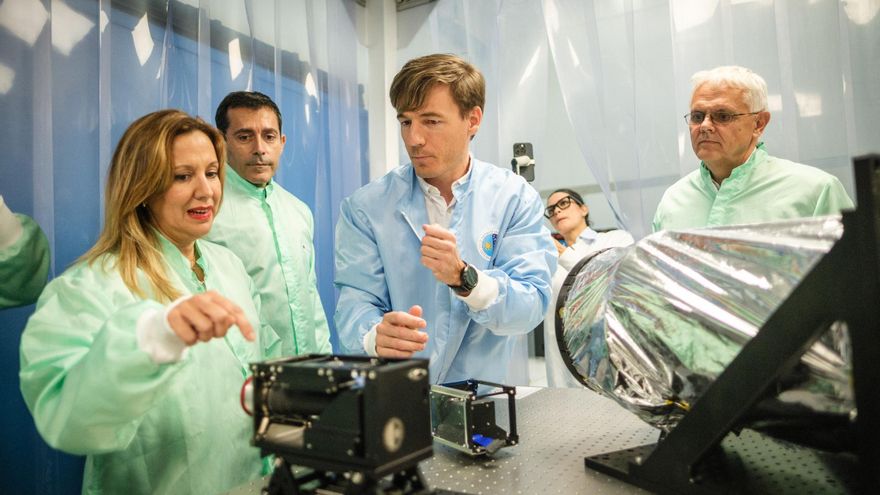
A constellation composed of Eight Satellites with Canarian DNA will oversee the islands from space to enhance emergency management, track natural disasters, or assist farmers in conserving water. This ambitious initiative stems from a collaboration agreement between the Institute of Astrophysics and the Cabildo de Tenerife, aiming to capture high-resolution satellite imagery that provides information about the islands on a daily and independent basis.
Both entities announced this development on Monday at the scientific-technological park where the IACTEC is based, emphasising the potential for this space project to serve as a “catalyst” and job creator within the sector. According to the Innovation Minister of the Cabildo de Tenerife, Juan José Martínez, this initiative could, in the long term, encourage economic diversification surrounding science and innovation.
Specifically, the Insular Cabildo and representatives from the IAC and IACTEC convened to unveil The third generation of the Drago camera. This compact device is capable of capturing images in the infrared spectrum and, despite its diminutive size, has achieved a resolution superior to that of the Sentinel satellite of the European Space Agency (ESA).
This instrument was developed with the same principles as its predecessors—compactness and efficiency—but with enhanced design and capabilities. The Drago-3 will offer a resolution five times better than that of its earlier versions and will possess additional short-band spectrum bands for atmospheric correction. As explained by José Alonso, manager of the IACTEC Space Delegation, “they will effectively eliminate the atmospheric turbidity affecting image clarity, resulting in a clearer image.” This advancement will enable us to obtain not only qualitative but also quantitative measurements,” the engineer added.
Additionally, engineers aim for the instrument to be modular, alongside being small, lightweight, and manageable. The objective is for it to be “easily integrable into various types of satellites,” Alonso noted.
The 12 engineers involved in this project have set a two-year timeline to complete the enhanced version of the Drago camera. “We anticipate finalising the design within 11 months and commencing production in the latter half of 2026,” states José Alonso. The Cabildo de Tenerife has allocated a total of 2.2 million euros to IACTEC to initiate this project. “Without this support, it would not have been feasible,” remarked IAC director Valentín Martínez.
Once finalised, the Canary Islands will advance to the next stage of its own aerospace journey: establishing a satellite constellation capable of monitoring the archipelago daily. “The aim is for these eight satellites to each be equipped with a Drago camera,” mentioned Rosa Dávila, the president of the Insular Corporation. Furthermore, each satellite will be assigned a name with Canarian origins, following the example of Alisio-1, launched in December 2023 from Cape Canaveral.
It is no surprise that the success and opportunities presented by the Alisio-1 orbit have spurred this significant aerospace project and fostered closer collaboration with the Cabildo. “Numerous entities in the Canary Islands have since approached us for land observation images, both for intelligence and research services,” said Alonso. However, the limited frequency of the satellite’s passes meant they could not obtain these photographs daily: “Currently, it passes every week.”
















